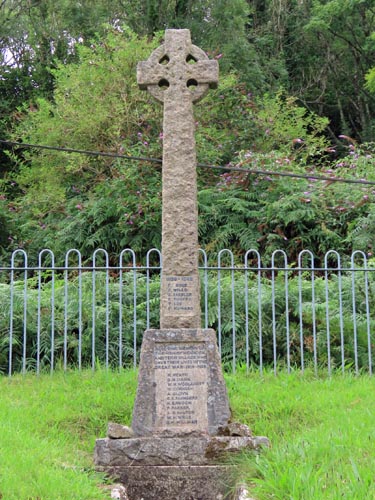| Hennock Memorial Cross |
 Location:
In an area surrounded by
railings on the west side and above the level of Church Road, Hennock. Location:
In an area surrounded by
railings on the west side and above the level of Church Road, Hennock.O/S Grid Ref: SX/83235/80629 Longitude/Latitude (Degrees+/-): -3.65173/50.61364 Map location: Click here to view map. Purpose: War Memorial Cross Size: The cross measures 6 feet 5 inches (1.96 metres) high, with the head being 1 foot 8 inches (0.51 metres) square. The socket stone is 24 inches (0.61 metres) by 18 inches (0.46 metres) at the base, tapering up to 16 inches (0.41 metres) by 14 inches (0.36 metres) and is 26 inches (0.66 metres) high. The base, on which the socket stands, is 3 feet 3 inches (0.99 metres) wide, 2 feet 6 inches (0.76 metres) deep and 7 inches (0.18 metres) high. Information: This tall
slender celtic cross sits proudly in an area above Church Road, Hennock in
memory of those local brave men, of both Hennock The cross, which was consecrated by the Bishop of Exeter in November 1924, was originally erected as a memorial for the First World War, with the second World War being added after that conflict had ended. The site for the cross was donated by Mr F. G. G. Hazelwood and was particularly chosen for the cross to be visible by the inhabitants of Teign Village, in addition to those living locally in Hennock.
(This cross marks a new milestone for our website, as it is the 200th cross that has had its own page posted to the site). Our thanks to Jim Apps for bringing the cross to our attention. |